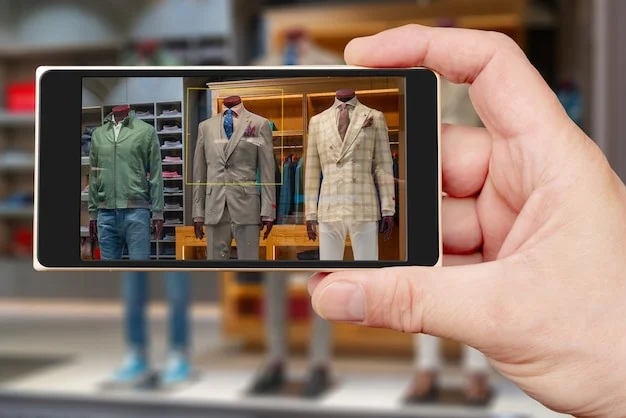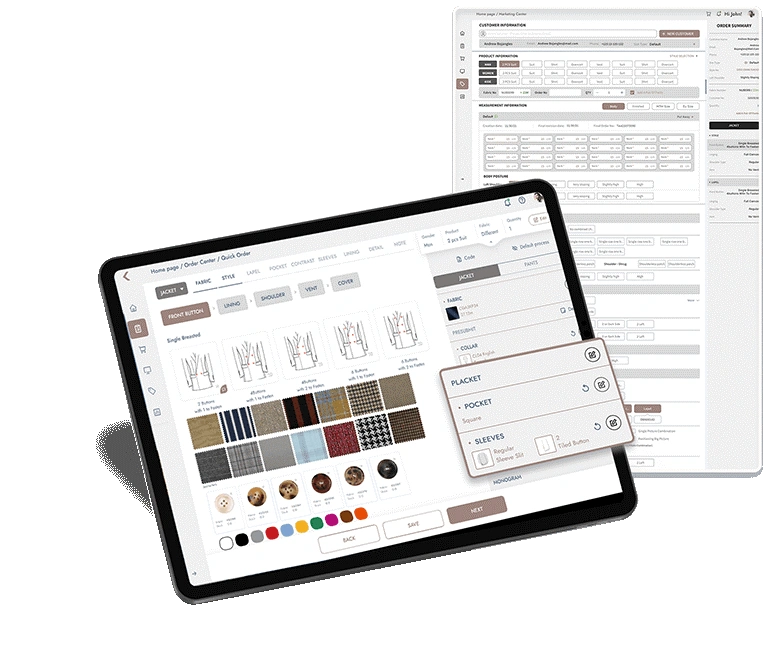
The fashion industry is witnessing a significant transformation in the digital age, especially in the custom clothing segment. Advancements in technology have revolutionized personal style and fit. From cutting-edge material innovations to AI-driven designs, the digital age redefines the boundaries of style and sustainability.
Custom clothing, once limited to high fashion and bespoke tailoring, is now accessible to a broader audience. Therefore, designers and businesses are embracing the technology to offer unmatched precision and personalization.
In this article, we'll explore the latest technological advancements in custom clothing and how they are reshaping the future of fashion.
Custom clothing tracks back to ancient China, during the Han Dynasty. Silk garments were adorned with intricate woodblock prints, often featuring three flowers in vibrant colors. It then traveled to Asia and Africa, eventually reaching Europe.
In the 18th century, clothing was made by hand and tailored to fit individuals perfectly. The process involved detailed measurements and several fittings by a highly trained tailor or seamstress.
However, after the Civil War, meeting the demand for custom-made uniforms became difficult. The standard sizing was introduced that doesn’t fit well like the custom-clothing but it was faster and scaled better.
By the 19th century, bespoke or custom clothing became a symbol of sophistication in high society. However, the mid-20th century saw the rise of industrialization, which brought about the mass production of ready-to-wear clothing. While this made fashion more accessible to the masses, it also marked a decline in bespoke tailoring. Custom clothing became less common and was reserved primarily for those who could afford the luxury.
With the introduction of “off the rack” clothing, people could just walk into the store and buy clothes. At that time, big names like Macy’s, JC Penny, and Neiman Marcus, became popular in apparel shopping.
In 2005, the average American consumer became comfortable with standard sizing. However, the sizing was a big issue. The size of one brand is not the same as the size of the other brand. Brands saw an opportunity, and custom clothing re-entered the market stronger than before.
With the advancement in technology, custom clothing can now be bought online with the flexibility of choosing the size, fabric, style, collar type, and other details on the screen. Innovations in fashion, like 3D body scanning, virtual fitting rooms, and AI-driven design tools, have made the clothing experience more personalized.
The custom clothing industry is undergoing a profound transformation, driven by cutting-edge technologies enhancing personalization and efficiency. Innovations such as 3D body scanning, artificial intelligence, and digital design platforms are redefining how custom garments are created and tailored. Following are the key technologies that are revolutionizing the custom clothing industry.
This technology uses specialized scanners to capture a precise, three-dimensional digital model of an individual's body. Unlike traditional measurement methods, where there are risks of errors and inconsistencies, 3D body scanning provides highly accurate and comprehensive data on body dimensions, contours, and proportions.
The advantages of 3D body scanning go beyond just accuracy. It facilitates a simplified fitting process that saves time involved in getting oneself perfectly fitted. By crafting detailed digital avatars, designers, and manufacturers can create garments that accurately match unique bodies’ shapes. An apparel brand, TrueToForm, designs clothes using a 3D body measuring AI-powered scan app to form virtual models with exact measurements.
Moreover, 3D body scanning enhances the customization experience for consumers, allowing them to see how different styles and fabrics will look on their bodies before making a purchase.

Artificial intelligence is revolutionizing the fashion industry by offering unparalleled customization and insight into consumer behavior. AI algorithms process extensive data, including style preferences and body measurements, to create stylish and perfectly fitted garments.
Tools like Google's Project Muze assist designers by suggesting innovative styles based on patterns and consumer trends, while Heuritech analyzes social media to forecast future fashion movements. The fast fashion giant Sweden’s Zara also embraces AI. Their algorithms identify patterns and predict which styles are likely to become popular in the future. This data influences their product offerings and marketing efforts.
AI also enhances customer experiences through personalized recommendations and virtual assistants. Retailers like Stitch Fix and Sephora leverage these algorithms to curate fashion selections that align with each customer's unique style and size, enhancing satisfaction and increasing the likelihood of purchase. This personalized approach not only improves the shopping experience but also drives sales by ensuring that customers discover items they are more likely to love and buy.

With digital design platforms, designers and customers collaborate to facilitate a more personalized design process. With the help of technology these platforms, customers can visualize their garments and make adjustments accordingly. It ensures a great customer experience as the clothing meets their specifications and is tailored to individual needs.
By utilizing advanced tools like 3D visualization and digital pattern making, digital design platforms ensure a high level of precision and accuracy in garment creation. These tools allow designers to create detailed digital models that account for every detail of a customer's body shape and measurements, resulting in a perfect fit with minimal alterations needed.
Kutetailor is a prime example of how digital design platforms are transforming the custom clothing industry. With its digital order center, customers can input their measurements, choose fabrics, and select from a wide range of styles and designs—all from the comfort of their homes. The platform's intuitive interface allows customers to visualize their garments in real-time and make any necessary adjustments.
Modern custom clothing ensures that consumers get an unrivaled level of precision and fit. Utilizing advanced tools like 3D body scanning enables one to tailor clothes to the exact measurements and every curve of a person’s body, thus eliminating inconsistencies or mistakes related to traditional measurement methods. The other benefits of incorporating technological methods in custom clothing are as follows:
Due to the technology of custom clothing, many personalization opportunities are available. This includes artificial intelligence and digital design platforms, which have enabled customers to choose from a variety of styles, fabrics, and designs that suit their preferences. By analyzing previous purchases made and other style preferences, AI-driven platforms can suggest designs that express the customer’s fashion sense, thereby making each garment genuinely unique.
The integration of technology has significantly streamlined the custom clothing process. Digital order centers, like those offered by Kutetailor, allow customers to input measurements, select fabrics, and track their orders online, all from the comfort of their homes. This reduces the need for multiple fittings and lengthy consultations, making the custom clothing experience more efficient and convenient.
As customers are becoming increasingly aware of sustainable practices, they expect transparency and accountability from brands. Custom clothing technology minimizes fabric waste by utilizing precise digital patterns and measurements. The efficiency of digital design and production processes reduces the overall environmental impact. Furthermore, the ability to create high-quality, long-lasting garments tailored to individual needs reduces the frequency of fast fashion purchases, contributing to more sustainable consumption patterns.
The benefits of custom clothing technology are vast, enhancing precision, personalization, efficiency, and sustainability. These advancements are setting new standards in the fashion industry, making custom clothing more accessible and environmentally friendly while ensuring a perfect fit and personalized style for every customer.
Wearable technology promises to revolutionize the custom clothing business with innovations such as smart fabrics and interactive clothes. For instance, smart fabrics that have embedded sensors can check several health indicators like heart rate and body temperature, thus giving instant feedback to the wearer. Athletes and fitness enthusiasts benefit from clothing that monitors heart rate, tracks movement, and provides real-time feedback.
In addition to this, another rising trend is interactive clothing that caters to the wearer’s environment or preferences. Under this kind of garment, a piece could change color or pattern depending on mood or temperature. Adaptive camouflage fabrics can be a big thing in the military as they change color to match the environment.
Consequently, clothing has become more than the fashion statement it used to be in the past; instead, it has transformed into a flexible tool for improving how one lives.

Augmented reality has the potential to revolutionize shopping by providing virtual fitting rooms. With AR technology customers have an opportunity to virtually try on clothes by using either their smartphones or AR glasses. It provides a platform where shoppers are able to see how different pieces will look or fit them without having tried them physically, hence enhancing convenience and reducing cases of returns.
Moreover, AR gives additional information about clothing, such as fabric blend, care instructions and outfit tips, which enhances the shopping experience. Eventually, when AR technology advances further, it will become part and parcel of the custom clothes sector blurring physical from digital shopping.
The future of custom clothing is very promising, thanks to technological revolutions. These advancements are more focused on enhancing precision, personalization, and efficiency. With AI-driven recommendations, digital design platforms, and wearable technology, bespoke and custom clothing is becoming accessible for all, maintaining sustainability. Brands are embracing these innovations to meet the unique needs and preferences of individuals and provide them with an interactive shopping experience.
Digital design platforms enhance collaboration between designers and customers, allowing real-time visualization and customization of clothes. Hence, they make adjustments while tracking orders online until they reach the final consumer in a more efficient way.
Wearable technology, such as smart fabrics and interactive wearables, makes clothes functional. Smart fabrics can track different health indicators, while interactive clothing can adjust to the wearer’s environment or preferences. In this regard, such technologies further make custom clothing versatile and personalizable.
The most popular use of Augmented Reality (AR) technology is virtual fitting rooms. With AR customers can virtually try on clothes, see how they fit, and get detailed information about them without having to put them on physically. When online shopping for clothes, one of the latest tools that people are using today is AR on their smartphone apps or glasses. It creates 3D models that simulate real life images of apparel and body scanning so that they will fit well in the virtual store.